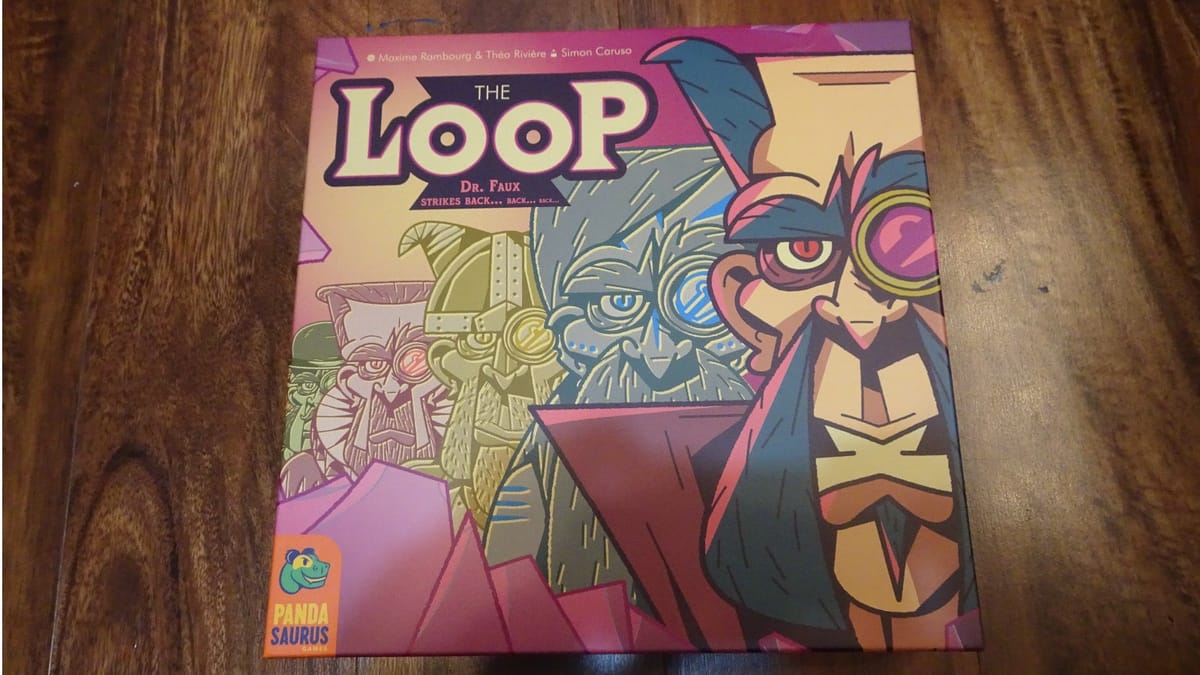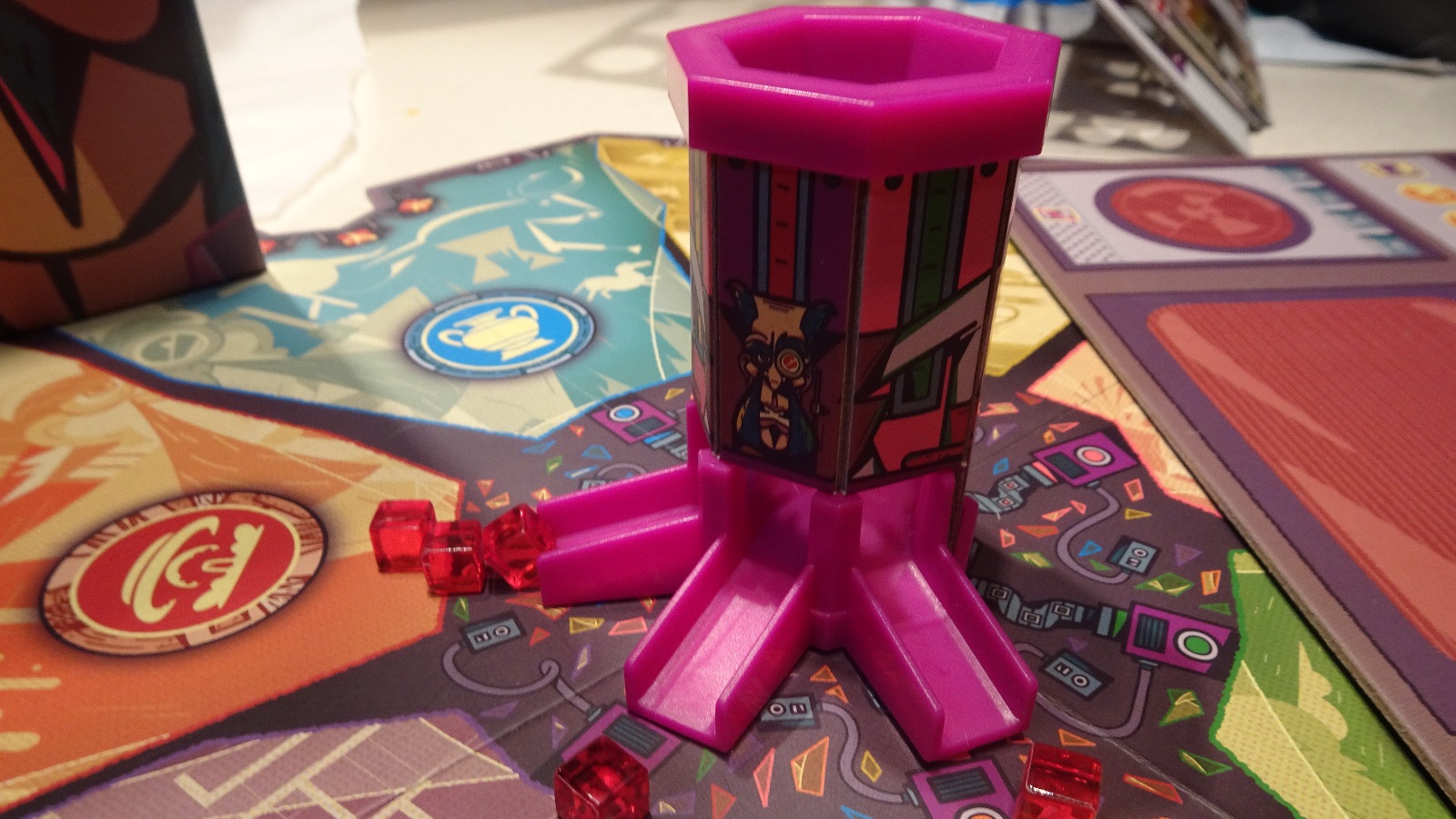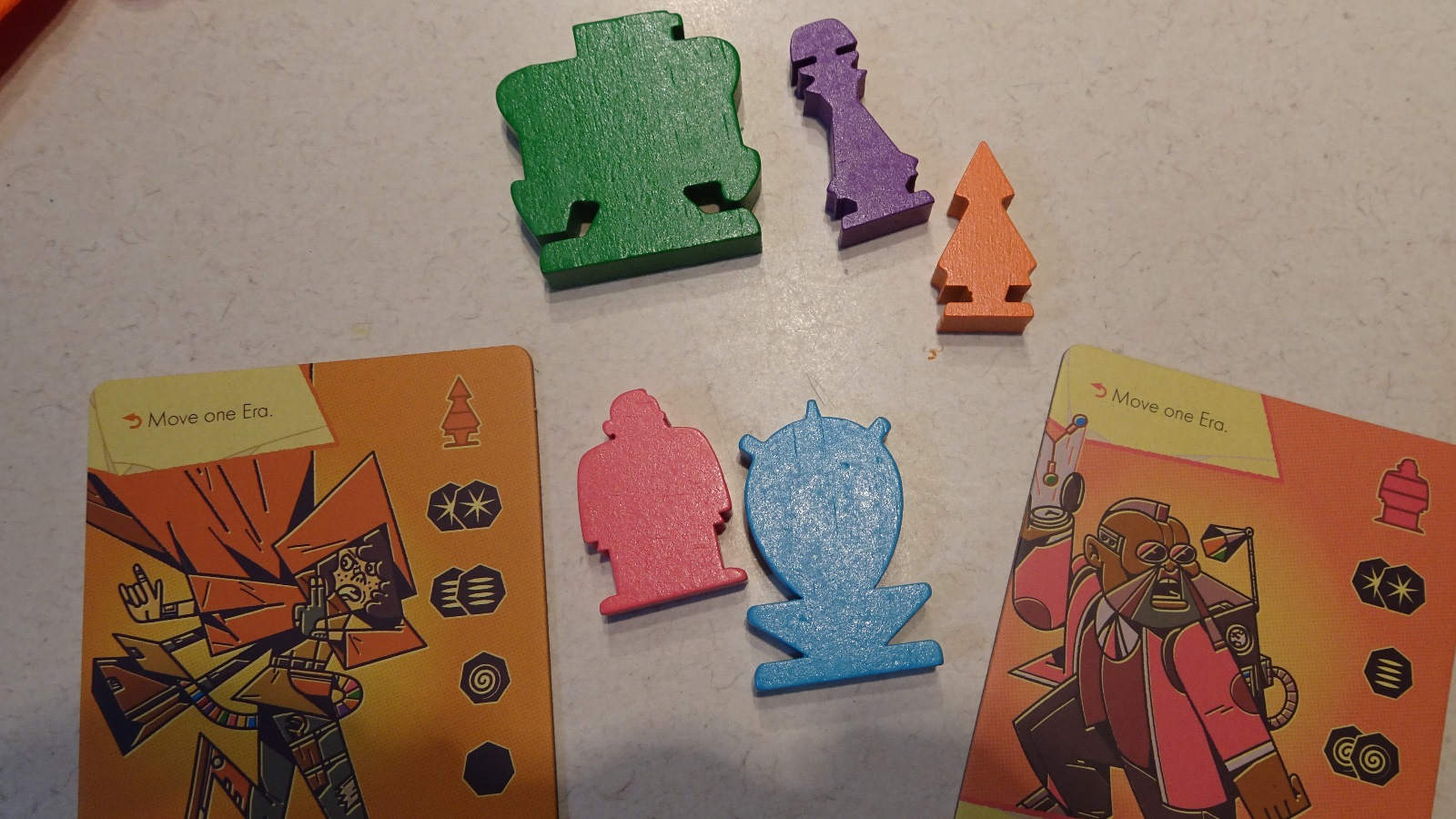
The LOOP is a cooperative deck builder where players take the role of time traveling agents sent to stop a villain from completing a destructive time travel loop. Using an interesting ‘cube tower’ mechanism that randomly will spit out cubes players have to deal with lest various historic eras become destroyed in a time paradox, the game mixes familiar mechanisms together in a unique enough way that the result is an interesting and thematic experience.
Centralized around the main tower, the board is composed of various time eras, from historical to futuristic, which players must navigate to eventually defeat Dr. Faux, the time traveling villain in this game. Time is limited as every turn more clones spawn, and more damage cubes are placed, if four are ever placed in an era it is permanently lost. Lose enough of these and the game is over. As a result players are torn between trying to build up their decks, dealing with fighting clones, and combating the ever-encroaching destruction of eras. This is all while also completing small missions that often involve doing less than ideal movements, all to eventually break the time machine before everyone is lost in an endless loop.

Each turn a group of clones of the evil Dr. Faux are drawn randomly and placed around the board based on their era. Each one also has a ‘destination era’ that if moved to, causes that clone to be removed from the game. These clones also function as an intensifier for the assignment of damage cubes. On each player’s turn, the cube tower will be rotated based on a drawn card to a specific era, and cubes will be loaded into the chute based on how many clones are there – the more clones, the more damage that will be done. The chute has three branches that randomly shoot the cubes out, and are a good source of tension when an era is on the verge of being lost and players are cheering for the cubes to not land on them.
To combat all this, players must manage movement, energy cubes, and their cards. On a turn the options are fairly simple, players can move a location and play their set of drawn cards. These cards range from doing things like adding energy cubes to a time zone, moving some of the enemy tokens around to try to kill them, moving players, or remove red cubes that are in this zone. Playing on the time travel mechanic, players can ‘loop back’ in time and reset their deck based on specific types of symbols each card possesses, and spending increasing energy cubes to do so.

What this looks like as an example is a player plays their three cards, then decides to spend an energy cube to loop back, two of their cards share the same symbol, and picks those to reset. They now can do more actions, another loop this time however will cost 2 energy. As a result there is a careful management of ‘do I use this energy now, or save it for something bigger later?’ In one game that seemed lost, a final turn of looping back four or five times was oddly satisfying, pulling victory out from the jaws of defeat.
The deck building aspect stems from that ending a turn on an era that has an unclaimed random item on it, allowing players to take it into their deck. The balance comes from that the card might be really good, but the time loop symbol might not be what they are going for – which would prevent them from looping effectively.

Regarding the art and humor, it is a key part of the design and is going to be hit or miss. One thing that regardless of one’s preference for the art, the board is just really busy with unnecessary clutter that really obfuscates the relatively important task of discerning what is where. The bright colors and everything else really are detracting because a huge part of the gameplay is trying to figure out where to shift the clones, how many damage cubes and energy cubes are present, and just a general survey of what is going on.
There is certainly going to be some ‘alpha player’/quarterbacking problems always present with these types of games but it is mitigated a lot by the random aspect of each turn, from card draws to cube placement. The theme works fairly well with the idea of time travel and loops. The base game comes with harder variations and there are expansions for the game for players this really hits home with. It is a light to medium weight game with a gameplay of about one hour that will leave players satisfied but not necessarily craving another replay.
The Loop
Great
This game surprised me; everything comes together in a fairly tight package. The ratcheting up of tension works well and some of the epic late game moves of saving things felt satisfying and heroic. The art and style is going to be off-putting to some which is unfortunate as the game here is actually pretty good. For a single play though in a gaming session it would fill a good role, but the puzzley nature makes it unlikely to want repeat performances in quick succession.
Pros
- The random nature takes away a little of the quarterbacking
- Items are fun and cool from their eras
- Late game combos are great fun pulling out victory
Cons
- The art and humor is going to be hit or miss
- The board is incredibly busy with unnecessary art
- Randomness can cause instant losses on occasion
